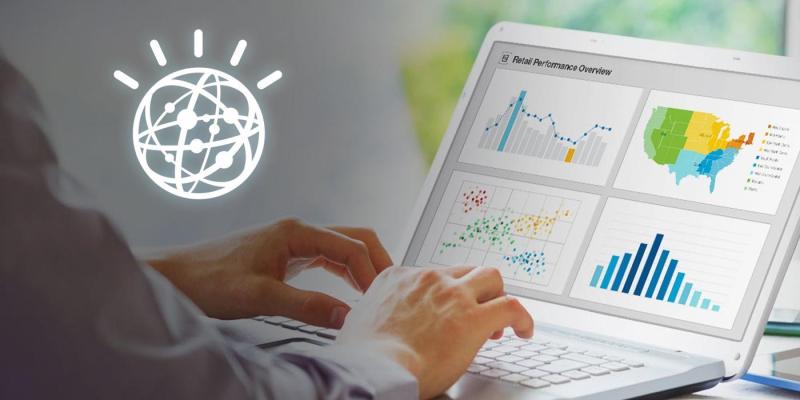Redefining Business with Algorithms
3AI May 17, 2021

Algorithms will not only drive scores of business processes, but also build other algorithms, much as robots can build other robots. And rather than using apps, future users’ lives will revolve around cloud-based agents enabled by algorithms. Gartner expects that by 2020, smart agents will facilitate 40% of all digital interactions.
Organizations will license, trade, sell and even give away non-lynchpin algorithms and single-function software snippets that provide new opportunities for innovation by other organizations. Organizations will also partner with cloud-based, automated suppliers with the industry expertise to advice on ways to avoid future risk and adapt to technology trends.
Wild stuff, but it’s no surprise that future value will come from increased density of interactions, relationships and sharing between people, businesses and things ̶ or what Gartner calls the “economics of connections.” The greater the density of connections, the greater potential value you can reap. We’ve seen interconnection coming of age for a while now and have invested heavily in a platform to empower enterprises with fast, direct and secure interconnections with business partners and network and cloud service providers.
Redefining Business Architecture with Algorithms
The term “algorithmic business” is relatively new, but the practical use of algorithms is already well established in many industries. Gartner, Inc. said that enterprise architects (EAs) and IT leaders must begin designing their algorithmic business models, both to capitalize on their potential for business differentiation, and to mitigate the possible risks involved.
Gartner Senior Vice President Peter Sondergaard, provided a deep dive into the not-so-distant future of organizations that are driven less by products, services and customers, and more by “digital algorithms, relationships and interconnections.”
Sondergaard urged established businesses to adopt a “bimodal strategy” (a continuation from last year’s theme) and build what he called a digital business platform, completely separate from legacy systems, that harnesses algorithms, interconnections, the cloud and the Internet of Things (IoT) to innovate, share value, increase revenues and manage risk.
New platforms based on this bimodal model should be far simpler, more cloud-based and more flexible than in the past, with the ability to add and remove capabilities “like Velcro” to support new short- and long-term projects, he said. At the same time, IT should start divesting itself of older systems and functions that are outliving their usefulness or could be better done by other methods. Sondergaard predicted that by 2020, 80% of bimodal companies’ revenues will be digital.
The significant development and growth of smart machines is a major factor in the way algorithms have emerged from the shadows, and become more easily accessible to every organization. We can already see their impact in today’s world, but there is much work ahead to harness the opportunities and manage the challenges of algorithmic business.
Enterprise architects and IT leaders should examine how algorithms and smart machines are already used by competitors and even other industries to determine if there is relevance to their own needs. The retail sector has long been at the leading edge of using analytics and algorithms to improve business outcomes. Today, many retail analysts believe that the algorithms that automate pricing and merchandising may soon become the most valuable asset that a retailer can possess.
In human resources, algorithms are already transforming talent acquisition as they are able to rapidly evaluate the suitability of candidates for specific roles, but the same technology could easily be applied within an organisation to allocate workloads to the right people.
In healthcare, the open availability of advanced clinical algorithms is transforming the efficiency of healthcare delivery organizations and their ability to deliver care.
The practice of sharing and co-developing algorithms between organizations with mutual interests could be relevant to most organizations. It is also likely to be a development model employed in many vertical industries.
The Challenges of Algorithmic Business
The advances and benefits of algorithmic business will come hand in hand with obstacles to navigate. Whether the problems are anticipated or unexpected, as smart computing becomes more pervasive, the implications have the potential to make or break organizations.
For example, an extreme point of view is that any beneficial effects of algorithms on humanity may be nullified by algorithmically driven systems that are antithetical to human interests. Or, while an algorithmic business model may be deployed with good intentions, it could be manipulated by malicious humans to achieve undesirable outcomes. Undesirable, at least, from the point of the view of the person or organisation that owns or controls the algorithm.
Algorithms rely on the data they are fed, and their decisions are only as good as the data they are based on. Moreover, tricky ethical problems that do not necessarily have a “correct” answer will be inevitable, as a greater complexity of decision making is left in the hands of automated systems.
The scale of change that is made possible by smart machines and algorithmic business warrants considerable planning and testing. Organizations that fail to prepare risk being left behind or facing unexpected outcomes with negative implications.
The Transformation in the Post-App Era
Making sense of all the data about how customers behave, and what connected things tell an organization, will require algorithms to define business processes and create a differentiated customer experience. Algorithms will evaluate suppliers, define how our cars operate, and even determine the right mix of drugs for a patient. In the purely digital world, agents will act independently based on our algorithms, in the cloud. In the 2020s, we’ll move away from using apps to rely on virtual assistants – basically, algorithms in the cloud – to guide us through our daily tasks. People will trust software that thinks and acts for them.
Take this to another level and the algorithms themselves will eventually become smart by learning from experience and producing results their creators never expected. Eventually, they will spawn other algorithms, creating agents out of agents or robots out of robots.
The Final Constraint
Therefore, we have to get the algorithms right. In essence, algorithms spot the business moments, meaningful connections, and predict ill behaviors and threats. CIOs need to be the strategic voice on the use of information, to build the right technology platform, and to become a trusted ally to their CEOs. Calculate the value of your algorithms. Be an algorithmic business.






